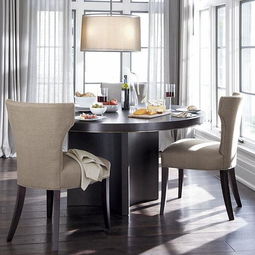欧美家具设计理念
Exploring Contemporary Trends in European and American Furniture Design
Furniture design in Europe and America is a rich tapestry woven with historical influences, cultural dynamics, and evolving trends. Let's delve into the contemporary landscape of European and American furniture design to understand the prevailing styles, materials, and philosophies shaping this vibrant industry.
European furniture design has been profoundly influenced by various periods such as the Renaissance, Baroque, Rococo, and Bauhaus movements. Each era brought its own aesthetic sensibilities, craftsmanship techniques, and design philosophies.

American furniture design, on the other hand, has its roots in colonial craftsmanship, evolving through Shaker, Arts and Crafts, and Modernist movements. The fusion of diverse cultural influences, from Native American to European immigrants, has contributed to the eclectic nature of American furniture design.
In recent years, both European and American furniture design have witnessed a resurgence of interest in minimalist, Scandinavianinspired aesthetics. Clean lines, functionality, and natural materials characterize this trend, reflecting a shift towards simplicity and sustainability.
1. Sustainable Materials
There is a growing emphasis on ecofriendly materials and production methods in contemporary furniture design. Designers are increasingly using reclaimed wood, recycled metals, and organic fabrics to create pieces that minimize environmental impact.
2. Modular and Versatile Designs
Modular furniture that offers flexibility and adaptability to various living spaces is gaining popularity. Consumers seek multifunctional pieces that can be easily reconfigured to suit changing needs, especially in urban environments where space is limited.
3. Artisanal Craftsmanship
While massproduced furniture remains prevalent, there is a renewed appreciation for artisanal craftsmanship. Handcrafted pieces imbue a sense of authenticity, uniqueness, and heritage, appealing to consumers seeking oneofakind items with a story.
4. Fusion of Traditional and Contemporary Elements
Many designers are experimenting with blending traditional craftsmanship with contemporary aesthetics. This fusion results in furniture that pays homage to heritage techniques while incorporating modern design sensibilities, creating timeless pieces with a contemporary twist.
For aspiring furniture designers looking to make their mark in the European and American markets, several guiding principles can inform their practice:
1. Embrace Sustainability
Integrate sustainable materials and production methods into your design process to appeal to environmentally conscious consumers and contribute to a greener future.
2. Prioritize Functionality
Design furniture that not only looks aesthetically pleasing but also serves a practical purpose. Consider the needs and lifestyles of your target audience to create functional pieces that enhance their daily lives.
3. Cultivate Artistry
Hone your craftsmanship skills and cultivate a unique artistic voice. Whether through traditional woodworking techniques or innovative material experimentation, infuse your creations with creativity and passion.
4. Stay Curious and Adaptive
Remain open to new ideas, trends, and technologies shaping the furniture design landscape. Continuously educate yourself, explore diverse influences, and adapt your design approach to stay relevant in a dynamic industry.
European and American furniture design epitomize a blend of tradition, innovation, and cultural diversity. From minimalist Scandinavianinspired pieces to artisanal creations that celebrate heritage craftsmanship, the contemporary landscape offers a rich tapestry of styles and philosophies. By embracing sustainability, functionality, artistry, and adaptability, aspiring designers can carve out their niche in this everevolving industry, contributing to its vibrant tapestry for generations to come.





